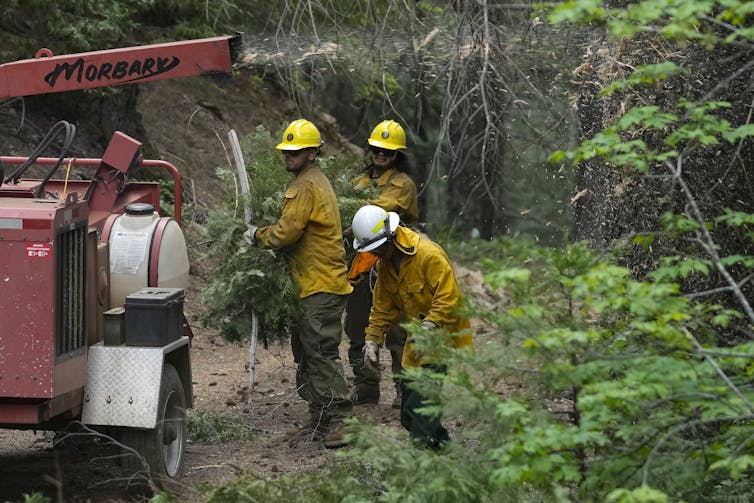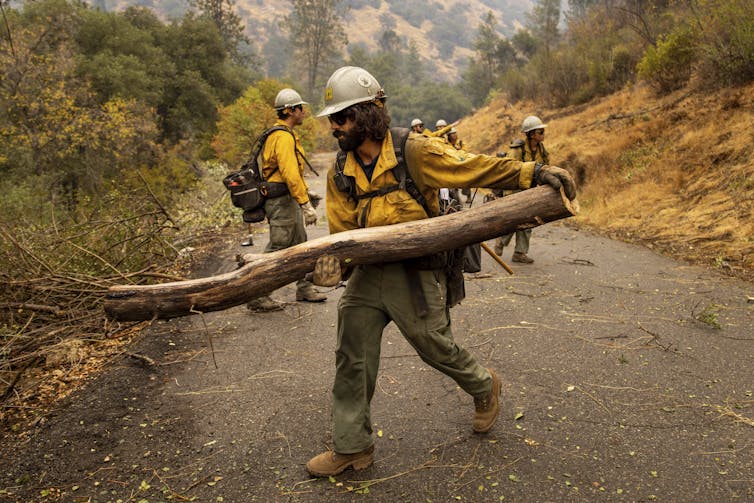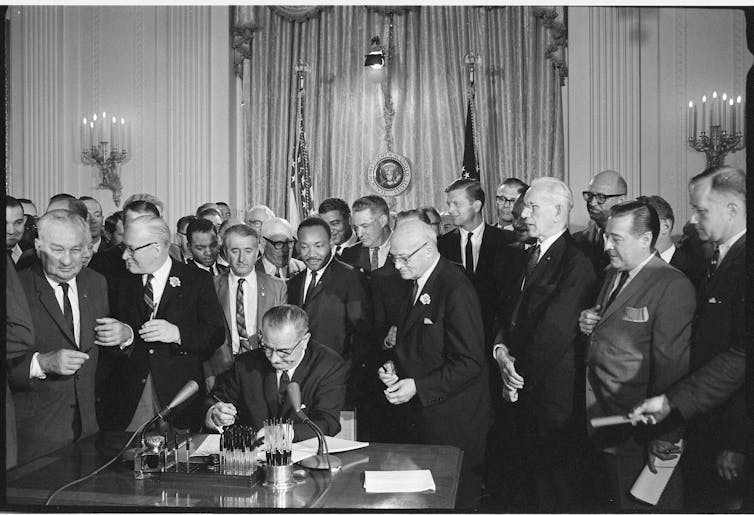Source: The Conversation – UK – By Jim Hoare, Honorary Research Associate in the Centre of Korean Studies, SOAS, University of London
China invited world leaders to its capital, Beijing, recently to celebrate the 85th anniversary of Japan’s surrender in the second world war. Western leaders were notably absent. But despite the presence of many other leaders, such as Russian president Vladimir Putin, it was the arrival of North Korea’s Kim Jong-un that seemed to attract most international media attention.
This was Kim’s fifth visit to China since he assumed power in 2011 – the last was in 2019 before the COVID pandemic. And it was the first time he had attended a multilateral international meeting.
Kim travelled to Beijing by train – an armoured train at that. Although he does not seem to have the fear of flying his father had, it is not the first time Kim has used a train to travel overseas. In 2019, he went to Hanoi in Vietnam – a much longer journey – to meet US president Donald Trump the same way.
The train allows for a large entourage and provides an opportunity to prepare for meetings. It may also be more secure than the country’s aircraft after some years of no or little use due to the pandemic and the effective sealing off of North Korea from most of the rest of the world.
Aside from the travel preferences of its leadership, here are three things we learned about North Korea from the summit in Beijing.
1. There is no obvious succession plan
Kim was accompanied not by his wife, Ri Sol-ju, who was with him on at least one previous visit to China. Nor did he travel with his sister, Kim Yo Jong, who has been seen by many as a power in her own right. He arrived in Beijing with his daughter, Kim Ju Ae, who is believed to be about 13.
She first appeared in public in 2022, joining the North Korean leader at an inspection of a major intercontinental ballistic missile launch. Kim Ju Ae has been seen with her father, and occasionally her mother, on several subsequent occasions. This has led to speculation that she is being groomed to be Kim’s successor.
However, she made no appearances with her father after arriving in Beijing. This may have been a learning trip rather than an indication that she has been selected to succeed her father.
Before 2022, there was similar speculation about Kim Yo Jong, who was noted for hostile statements on relations with South Korea. While she has not disappeared from the scene, Kim Yo Jong is not shown the same level of deference as her niece.
If Kim is preparing a successor, he is departing from the approach of his grandfather and first North Korean supreme leader, Kim Il-sung, as well as his father, Kim Jong-il. Kim Jong-il did not make public appearances until he was in his 30s. He was not identified as the successor until later.
Only after he suffered a stroke in 2008 did Kim Jong-il select Kim Jong-un, aged 24, as his successor. To select a child – and a female at that – seems fraught with difficulties. Korean society, north and south, still tends to attach a high value to age and experience. And despite formal equality in both countries, there is a strong belief in male superiority.
2. It can rely on strong regional support
More significant than the presence of his daughter was the reception given to Kim Jong-un in Beijing. He was beside the Chinese president, Xi Jinping, and Russia’s Putin in front of the other leaders on the viewing platform for the ceremonial parade. This was the first time that leaders of the three countries had met together since Kim Il-sung, Mao Zedong and Nikita Khrushev met in China in 1959.
Kim Jong-un also held summit meetings with Putin and Xi, both of whom had signed up to sanctions on North Korea just a few years ago because of its nuclear programme. All of that now seems forgotten. The meeting with Putin reinforced the rapidly developing relations between the two countries, especially over the war in Ukraine.
Following Putin’s acknowledgement of the role North Korean troops have played in Ukraine, Kim said: “If there is any way we can assist Russia, we will certainly do it as a fraternal duty.” This may open the door for North Korea to send more troops to Ukraine and provide Russia with arms and ammunition.
In return for North Korea’s assistance, Kim has had economic support and, probably, some help in updating his country’s military capacity. Troops sent to support Russia will also have learned lessons about the nature of modern warfare.
The meeting with Xi produced pledges of further economic cooperation. Despite signing up for sanctions over the nuclear issue, China has not stopped providing food and oil to North Korea. This support now seems likely to increase.
Xi said the two countries were “friends with a common destiny”, while the Korean Central News Agency reported that North Korea would invariably support China’s interests.
3. It has been recognised as a nuclear state
Absent from both meetings was any reference to the denuclearisation of the Korean peninsula. This seems to indicate that both Russia and China accept that North Korea is a nuclear state.
According to a 2025 assessment by the US Office of the Director of National Intelligence, Kim views nuclear weapons as a “guarantor of regime security”. Some experts estimate that North Korea has produced enough fissile material to build up to 90 nuclear warheads.
Russia, China and North Korea can all show benefits from the summit in Beijing. Russia has a promise of continued North Korean support in the Ukraine conflict.
China, meanwhile, has reinforced its traditionally close relationship with North Korea. And Kim has not only been treated as a major world leader, but has gained additional practical support from his two big neighbours.
In such circumstances, it seems unlikely that he will be very receptive to overtures from Trump or to make any concessions over the nuclear issue.
![]()
Jim Hoare does not work for, consult, own shares in or receive funding from any company or organisation that would benefit from this article, and has disclosed no relevant affiliations beyond their academic appointment.
– ref. What we learned about North Korea at the summit in Beijing – https://theconversation.com/what-we-learned-about-north-korea-at-the-summit-in-beijing-264718




















